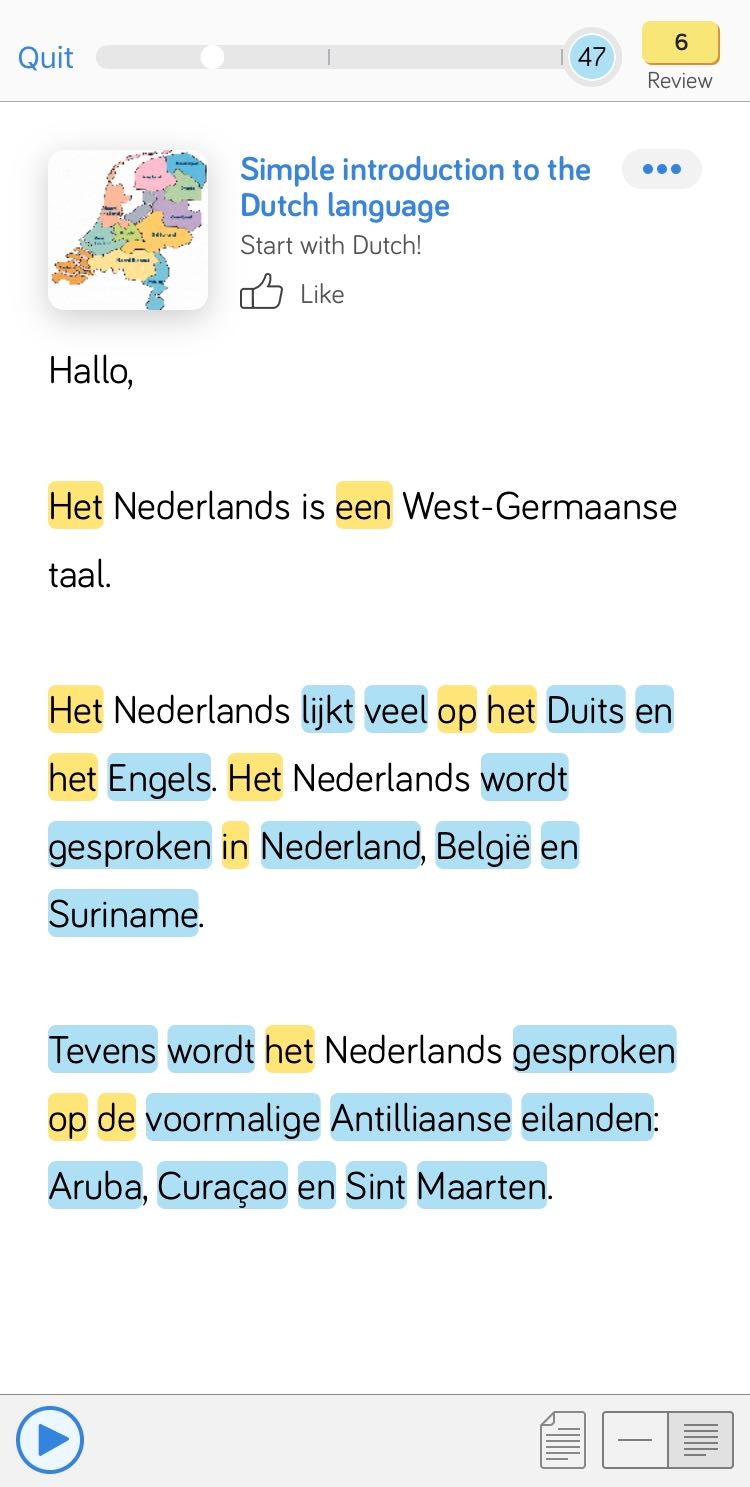Essential Dutch Phrases for Beginners
In this post we’re going to go over some of the key phrases for having a conversation in Dutch. We’ll cover basic introductions, how to say thank you and how to ask how someone’s doing.
If you want to start chatting to anyone in the Netherlands, Northern Belgium, or Aruba, you’ve got to know these essential Dutch phrases!
Basic Dutch Phrases: Introducing Yourself
As with thank you, Dutch has several ways of introducing yourself. Sometimes people use the phrase ‘mijn naam is…’ which matches the English expression ‘my name is….’ However, Dutch also has the verb ‘heten’ used specifically for giving names. As such, people usually ask about and exchange names using this verb.
Mijn naam is John. – My name is John
Wat is je naam? – What is your name?
Hoe heet u? – What is your name? (more formal)
Hoe heet je? – What is your name? (more informal)

Remember that in Dutch, there are different words for talking to one person or multiple people. So if you’re talking to multiple people, you need to change the grammar a bit: use the pronoun ‘jullie’ instead of ‘je’ or ‘u’, and the verb ‘heten’ must conjugate accordingly.
Hoe heten jullie? – What are your names?
Wat zijn jullie namen? – What are your names?
The verb ‘heten’ can also be used to explain the names of others. This applies both to people and animals. So, you can use it to introduce your friend at a party or your favorite pet.
Deze kat heet Felix. – This cat’s name is Felix (this cat is called Felix)
Zij heet Jannike. – Her name is Janneke
When people introduce themselves, they often follow up with a phrase of acknowledgement that means something like ‘a pleasure/pleased to meet you.’ This is a very common expression and is often shortened down to a single word.
Aangenaam kennis te maken. – Nice to meet you.
Aangenaam. – Nice to meet you.
There are some great lessons on LingQ that will help you learn the basics of introducing yourself in Dutch. Just highlight the words and phrases you don’t know and learn them as you progress through more and more lessons. Pretty soon fewer and fewer words will have highlights and you’ll be on your way to Dutch fluency!

Asking How Someone’s Doing in Dutch
Asking how someone is doing is pretty straight forward. We generally use the phrase ‘hoe gaat het’ which literally means ‘how goes it.’
Hoe gaat het? – How are you? (informal)
Hoe maakt u het? – How are you?
You can also be more specific with the phrase ‘hoe gaat het’ by adding the preposition ‘met.’ After this you can attach some form of the word ‘you’ according to the formality and the number of people.

Hoe gaat het met jouw? – How are you? (How goes it with you)
Hoe gaat het met u? – How are you? (How goes it with you)
Hoe gaat het met jullie? – How are you (pl) / How are y’all? (How goes it with you all)
You can also use this construction to ask about other people:
Hoe gaat het met Janneke? – How’s Janneke? (How goes it with Janneke)
Hoe gaat het met Jip en Jane? – How are Jip and Janneke (How goes it with Jip and Jan)
Culture Tip
In some English speaking countries, the question ‘how are you?’ is asked without the expectation of an in depth answer. This is simply not so in Dutch. When you ask how someone is, you can expect them to answer honestly, since the expectation is that you wouldn’t have asked if you didn’t want to know.
Asking for Things in Dutch
Suppose you are at a restaurant or a cafe and you suddenly realize that you don’t know how to ask for anything other than saying its name. Don’t worry! Asking for something in Dutch is quite simple. For one you can say what you want and simply follow it with the word ‘alstublieft’ (please).
Een koffie en een stroopwafel, alstublieft. – A coffee and a stroopwafel, please.
Een biertje, alstublieft. – A beer, please.
You can also politely request something with the tried-and-true formula ‘ik wil graag…’ This more or less means ‘I would like…’ and should work in more situations.
Ik wil graag een haring en wittebrood. – I’d like a herring on white bread.
Ik wil graag een glas water. – I’d like a glass of water.
The last expression is ‘mag ik…’ which translates to ‘may I…’ You can usually say what you want after this without needing to add a proper verb. Of course, if you want to add some additional politeness to your request, you can tack ‘alstublieft’ on at the end.
Sorry, mag ik een koffie? – Sorry, can I have a cup of coffee?
Mag ik een groene thee, alstublieft? – Can I have a green tea, please?
Using Your Key Phrases
Now that you know how to say hello, introduce yourself and ask how someone is, you’re all ready to try out your new phrases on someone who speaks Dutch.
While oefening baart kunst (practice makes perfect), it can be hard to practice Dutch sometimes. Most people who speak Dutch, whether in the lowlands or in the Caribbean, speak another language and are quite proud of it. As such, you probably need a lot of doorzettingsvermogen (persistence) to make sure your conversation sticks to Dutch rather than switching over to English.
Learn Dutch Faster Using LingQ
Immersing yourself in Dutch doesn’t require you to travel abroad or sign up for an expensive language program.
However, it can be a bit tiresome to find interesting content, go back and forth between sites, use different dictionaries to look up words, and so on.
That’s why there’s LingQ. A language app that helps you discover and learn from content you love.

You can import videos, podcasts, and much more and turn them into interactive lessons.
Keep all your favorite Dutch content stored in one place, easily look up new words, save vocabulary, and review. Check out our guide to importing content into LingQ for more information.
LingQ is available for desktop as well as Android and iOS. Gain access to thousands of hours of audio and transcripts and begin your journey to fluency today.
***
John Melnyk is a freelance writer and translator from Florida, USA. He has a masters degree in Linguistics and Communication and is currently working on his first novel.
